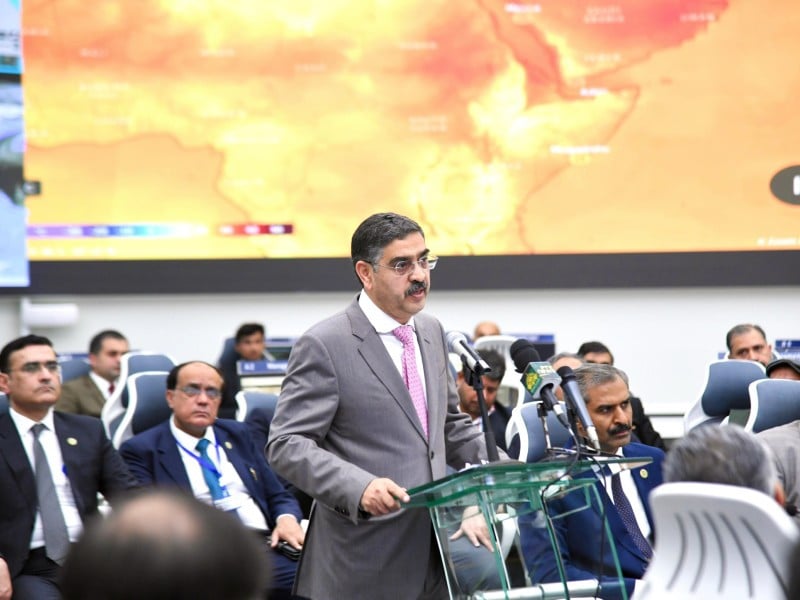Caretaker Prime Minister Anwaar-ul-Haq Kakar on Thursday inaugurated the newly established state-of-the-art National Emergencies Operation Center (NEOC) to help in coordinated efforts to manage natural disasters in the future. Established at the National Disaster Management Authority (NDMA) Headquarters, the Center would also help in disaster risk reduction and mitigation of damages. The prime minister lauded the establishment of NEOC and emphasized the importance of disaster-resilient infrastructure and policy framework.
Pakistan is prone to various natural disasters including earthquakes, floods, landslides and cyclones, while pandemics and infectious diseases are an all-time high risk in the modern world. These events can have significant impacts on the country’s infrastructure, economy, and population. Pakistan is located in a seismically active region due to the convergence of the Indian and Eurasian tectonic plates and various major fault lines run through across Pakistan from the Makhran coast to the northern parts of the country. On the other hand, the country is highly vulnerable to the disastrous effects of global warming and ever-worsening climate change because of the increased temperature, deforestation, water scarcity, soil erosion and droughts. Currently, global warming has caused serious survival risks for the South Asian nation, as last year’s superfloods caused nearly $30 billion in economic losses and monsoon floods have become a recurrent phenomenon on an annual basis.
Historically, disaster management and damage control is a global issue and a majority of countries face this problem because the volume of calamities often to be gigantic while timely mobilization of resources and effective mitigation often becomes a grave challenge for nations around the globe. Pakistan’s National Disaster Management Authority (NDMA) is the sole national body responsible for disaster management and damage control in the country. The NDMA works to mitigate the impact of various natural and man-made disasters through a coordinated approach with crucial assistance from Pakistan’s armed forces, civil organizations and NGOs. However, all those endeavours mostly aim at post-disaster mitigation measures and the country has always felt a need for a preventive strategy that not only warns the state about an impending disaster but timely mobilizes the relevant institutions to lower the cost of the natural calamity for the nation.
The government has recently constituted a National Emergencies Operation Center (NEOC) that would serve as a hub of all technological inputs related to climate change, disaster management and predictive modelling for national emergencies. The NEOC is the first of its kind in Pakistan and the region, that is an indigenously conceptualized capability, which will evolve the capacity to predict future disasters with credence and accuracy together with the location, time of impact and damage intensity. It would generate a coordinated response, guiding lower tiers of provincial and district-level disaster management authorities. As said the platform will assess the needs of the vulnerable areas and determine the gap to be pre-coordinated support from global partners through an all-time ready holistic national outlook in the form of a real-time National Common Operating Picture.
In fact, NEOC is a magnificent addition to the already in place disaster management measures, however, the disaster management and mitigation efforts must be back with disaster prevention measures including plantation of nationwide forests, soil treatment, construction of water reservoirs, flood canals, and removal of encroachment alongside rivers bed, swearing Nullahs and waterways. It is high time that our nation must actively works on climate adaptation and mitigation strategies to address these challenges. So, the nation does not face recurrent losses at periodic intervals in the future.







